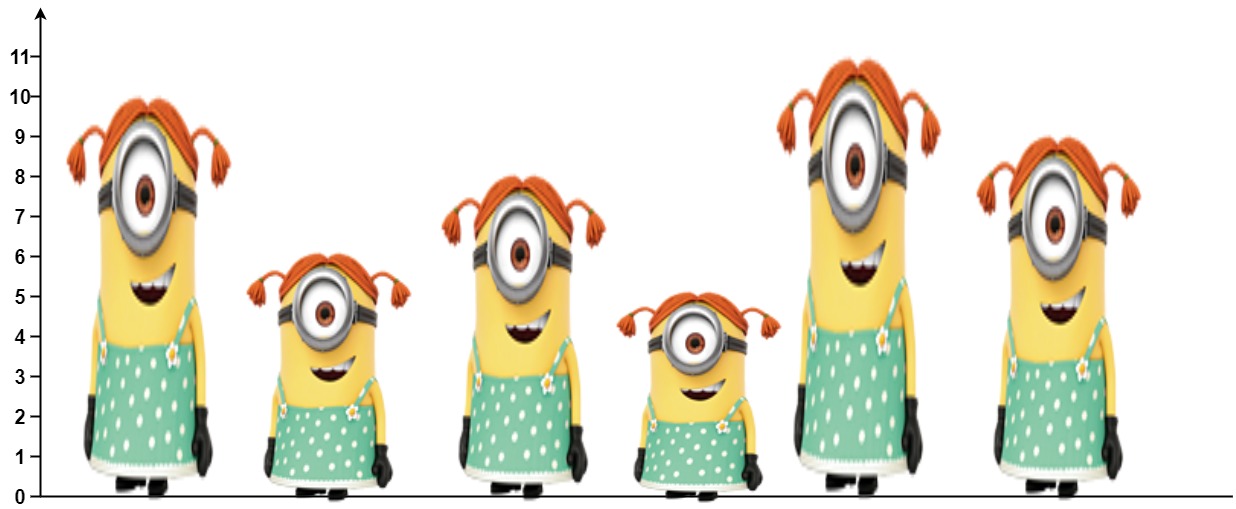原文链接: https://leetcode-cn.com/problems/number-of-visible-people-in-a-queue
英文原文
There are n people standing in a queue, and they numbered from 0 to n - 1 in left to right order. You are given an array heights of distinct integers where heights[i] represents the height of the ith person.
A person can see another person to their right in the queue if everybody in between is shorter than both of them. More formally, the ith person can see the jth person if i < j and min(heights[i], heights[j]) > max(heights[i+1], heights[i+2], ..., heights[j-1]).
Return an array answer of length n where answer[i] is the number of people the ith person can see to their right in the queue.
Example 1:

Input: heights = [10,6,8,5,11,9] Output: [3,1,2,1,1,0] Explanation: Person 0 can see person 1, 2, and 4. Person 1 can see person 2. Person 2 can see person 3 and 4. Person 3 can see person 4. Person 4 can see person 5. Person 5 can see no one since nobody is to the right of them.
Example 2:
Input: heights = [5,1,2,3,10] Output: [4,1,1,1,0]
Constraints:
n == heights.length1 <= n <= 1051 <= heights[i] <= 105- All the values of
heightsare unique.
中文题目
有 n 个人排成一个队列,从左到右 编号为 0 到 n - 1 。给你以一个整数数组 heights ,每个整数 互不相同,heights[i] 表示第 i 个人的高度。
一个人能 看到 他右边另一个人的条件是这两人之间的所有人都比他们两人 矮 。更正式的,第 i 个人能看到第 j 个人的条件是 i < j 且 min(heights[i], heights[j]) > max(heights[i+1], heights[i+2], ..., heights[j-1]) 。
请你返回一个长度为 n 的数组 answer ,其中 answer[i] 是第 i 个人在他右侧队列中能 看到 的 人数 。
示例 1:

输入:heights = [10,6,8,5,11,9] 输出:[3,1,2,1,1,0] 解释: 第 0 个人能看到编号为 1 ,2 和 4 的人。 第 1 个人能看到编号为 2 的人。 第 2 个人能看到编号为 3 和 4 的人。 第 3 个人能看到编号为 4 的人。 第 4 个人能看到编号为 5 的人。 第 5 个人谁也看不到因为他右边没人。
示例 2:
输入:heights = [5,1,2,3,10] 输出:[4,1,1,1,0]
提示:
n == heights.length1 <= n <= 1051 <= heights[i] <= 105heights中所有数 互不相同 。
通过代码
高赞题解
力扣双周赛-第五十七场
5196. 队列中可以看到的人数
第四道题,看到困难标签就已经自觉爬走了(不是
` 题目给了咱一条队列的人,每个人有自己的身高,身高矮的人会被身高高的人遮住视线,要咱判断这个队列里的每个人能看到右边有多少人。
第一感觉是单调栈(之前做过一个很像的题目)。
单调栈,顾名思义,一个维持单调的栈。打个比方,我有一个stack如图:

很明显这是一个单调递增的栈,当我们要插入一个元素7时,因为7并不影响递增性质(7 > top),我们可以把它直接放在栈顶。

那如果时小于6的数字呢?我们假设这个数字是3, 那我们就要通过pop出比这个数字大的数字来保持递增

众所周知,利用单调栈可以找出从左/右遍历第一个比它小/大的元素的位置
根据这道题,我们需要一个递减栈,从栈底到栈顶递减,用来找出从左往右遍历第一个比它大的位置。
class Solution {
public:
vector<int> canSeePersonsCount(vector<int>& heights) {
const int length = heights.size();
stack<int> myStack; //用于存放每个人的身高
vector<int> ans(length); //预先申明好空间
for(int i = length - 1; i >= 0; --i){ //从后往前遍历
while(!myStack.empty() && myStack.top() < heights[i]){ //如果没有遇到比他高的人
ans[i]++; //比这他低的他都能看到
myStack.pop(); //删掉这些比他低的人(在后续的遍历里,这些人会被这个人遮住)
}
ans[i] += !myStack.empty(); //如果非空,他还能看见一个人(即最后一个把别人遮住的人)
myStack.push(heights[i]); //把这个人给存到栈里
}
return ans;
}
};统计信息
| 通过次数 | 提交次数 | AC比率 |
|---|---|---|
| 2211 | 3817 | 57.9% |
提交历史
| 提交时间 | 提交结果 | 执行时间 | 内存消耗 | 语言 |
|---|




